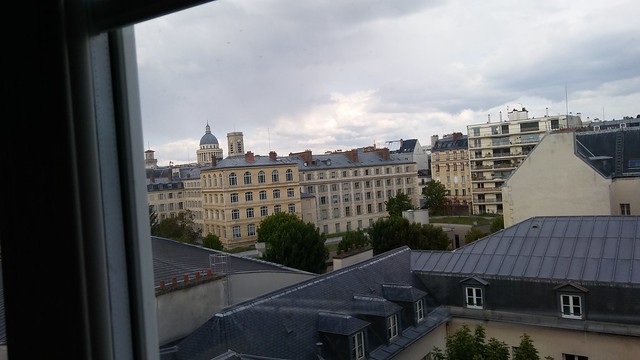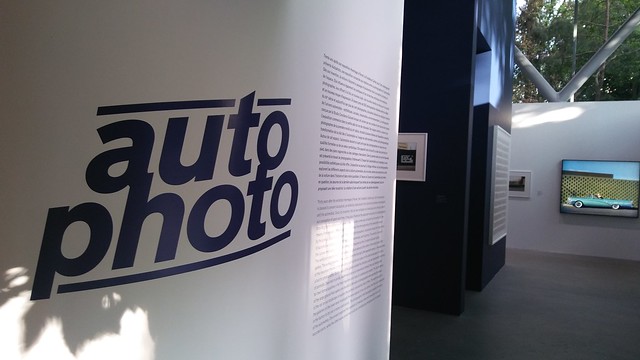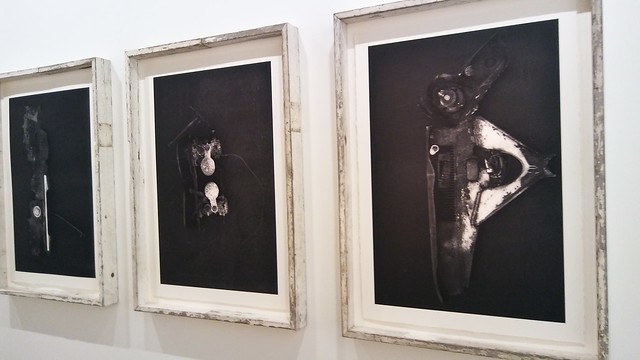After an overnight stop in Seoul, my flight arrived in Paris early afternoon yesterday local time. I'm here for three nights on the way to Kent, England, where I will spend most of May staying with my sister.
I came to my airbnb, a tiny maid's room on the top floor of a building near the Luxembourg Gardens on the left bank. Then I went walking for a couple of hours to familiarise myself with the surroundings, as I usually do when I arrive in a new location.
The most interesting attraction I came upon was Autophoto, a new photography exhibition at the Cartier Foundation for Contemporary Art. It was, as The Guardian put it, about 'how photographers fell in love with cars'. Or, as the Foundation's website says, the car's reshaping our landscape and radically altering our conception of space and time.
It was the most captivating photography exhibition I can recall visiting, perhaps with the exception of the 'selfies' of the American photographer Cindi Sherman in Wellington in January.
I thought of my father, who never showed any interest in art. But he loved cars. In 1923 his family was the first in his north-east Victorian district to acquire a car. We still have the blanket that was bought to insulate the family from its draughtiness.
He would identify periods of his life by the particular car he or his family owned at the time. In a way, I do the same. I am not exactly anti-car, but I got rid of my last car in 2012 and now consider not owning a car as part of my identity. I sometimes wonder what my father would have made of that.
It occurred to me that this would have been the perfect art exhibition for him, although what would have interested me is unlikely to have been a highlight for him.
The exhibit I liked most was a very literal rendering of the exhibition's theme of cars merging with the landscape. It was from the 1990 visit to New Zealand of Japanese photographer Hiroshi Sugimoto, whose three works appeared to be pieces of dark abstract art, despite my description of them as 'literal'.
Sugimoto explained: 'One day I came across an unusual cluster of things strewn over a beautiful beach. Vaguely familiar looking, they turned out to be hundreds of car parts... Someone must have junked a whole fleet of cars there... The sight of crafted objects rotting away is at once dreadful and beautiful.'
That summed up for me the impact of the car on our society, and Sugimoto's works were a perfect complement to the more photogenic works in the exhibition, which I enjoyed as well.


